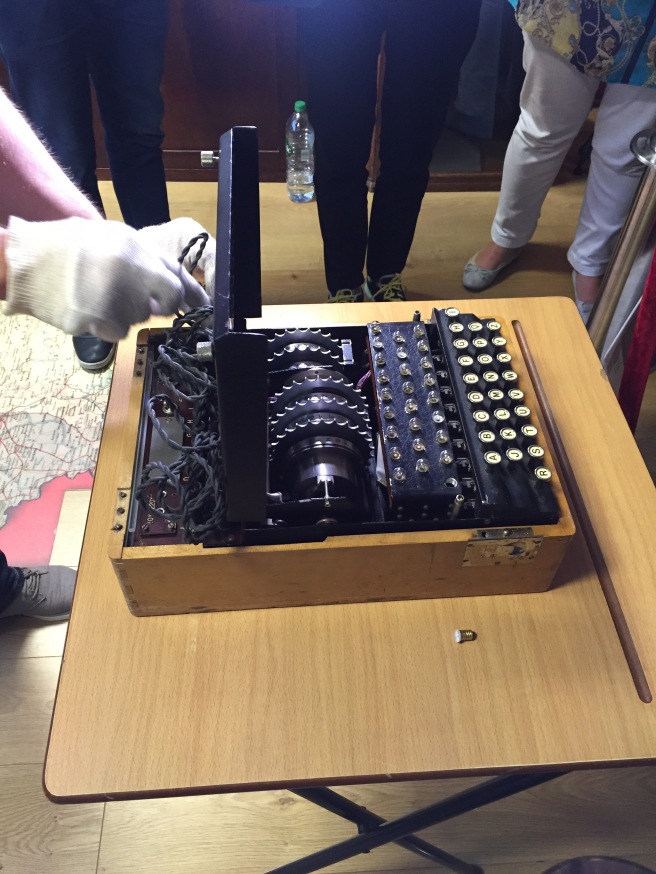I recently went to the Polish cultural institute in Hammersmith to see a talk on the WW2 enigma machine. I was not disappointed, the good condition facilitated a working demonstration. Not only was this a treat to see from a historical perspective, it is a physical embodiment of how high, and low level code works in the modern day of software development.

In short, a high-level coding language is simple but not as powerful. It’s more detached from the computer itself so you don’t have to know much about computer, to utilise the code. It’s more about the logic of solving the problem as opposed to the harnessing the logic of the computer to solve the problem. I recommend High-level languages to clinicians because it’s quick to develop solutions. Clinicians can gain a lot from a small time investment in learning the logic of a high-level language.

The enigma is an awe-inspiring piece of kit. The settings can be altered and everytime a button is pressed the cogs turn altering the pattern. If you pressed Y twice a different character will light up. This is the mechanical embodiment of the relationship between the high-level language python and the low-level language C/C++. Using Python is like typing into the the enigma, it’s quick at it does the job. Typing in C is like putting your hands in and twiddling with the cogs yourself. You can do more, like develop a new encryption pattern. However, if all you want to do is to encrypt a message then it’s excessive, complex, and more time-consuming than it needs to be. If you’re a clinician who wants to develop a simple web app that improves communication between departments or solves medical problems start learning a high-level programming language today. Learn how to code a DVT risk score calculator in less than one hour with no coding experience with these simple youtube videos.

